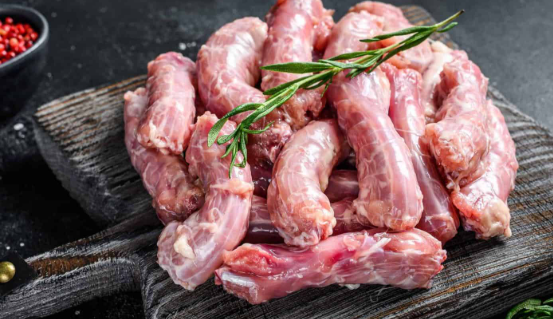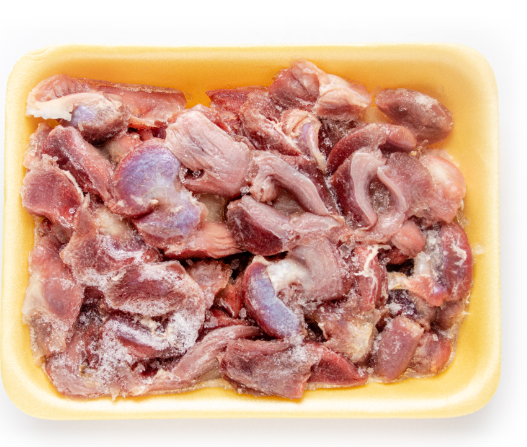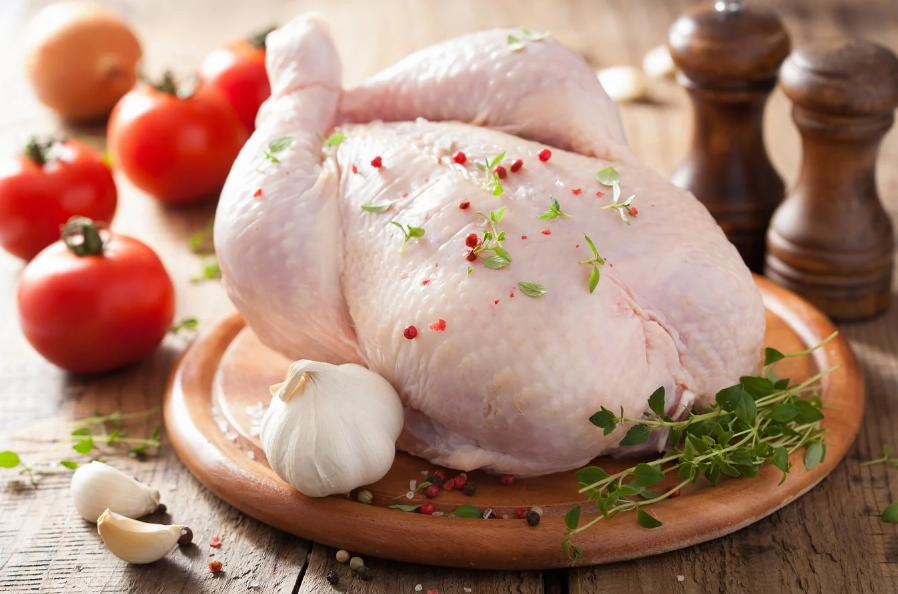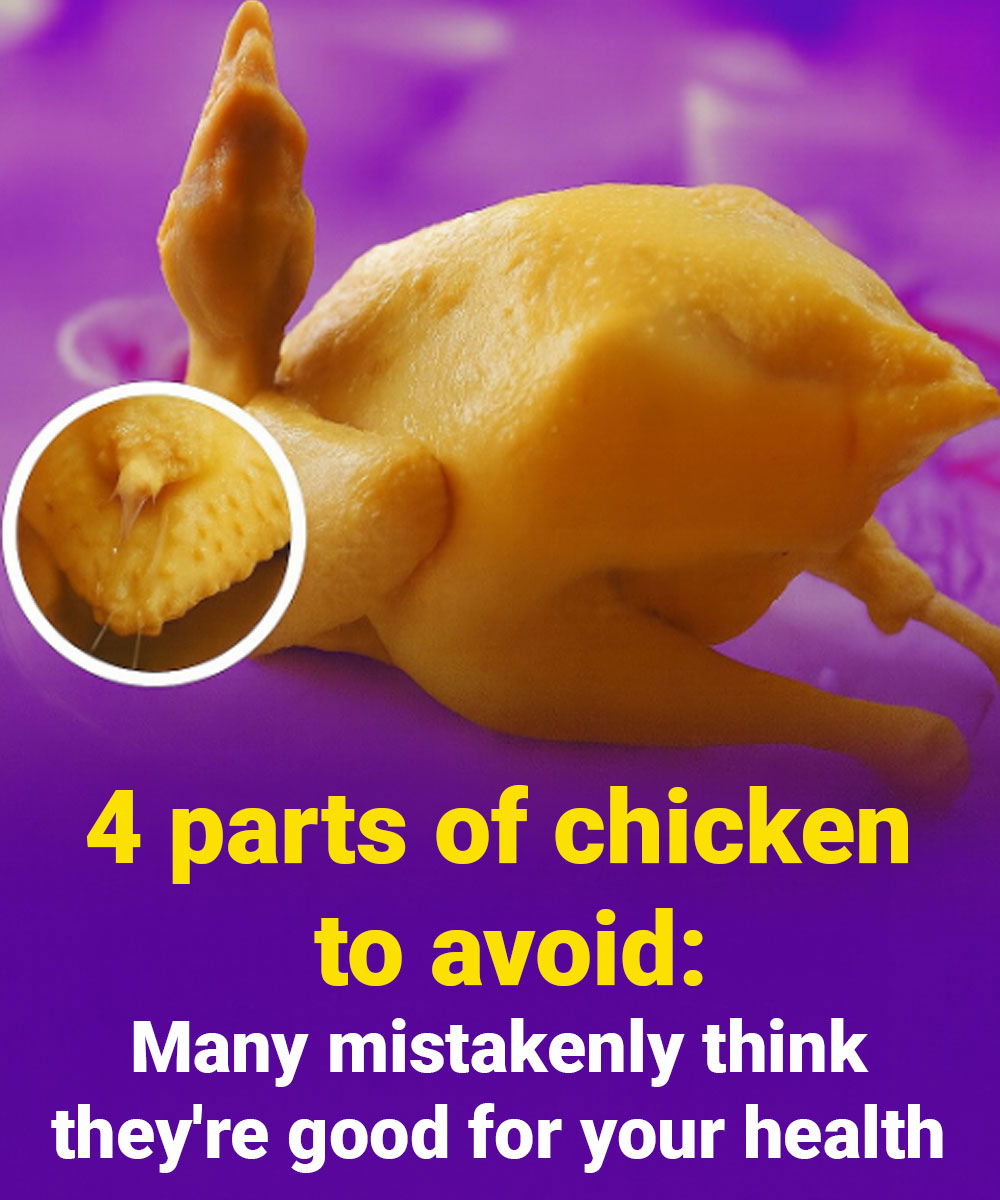🧠 Do you really know what you’re eating?
Chicken is one of the most consumed foods in the world 🌎. In many homes, it’s a must-have at least once a week on the family table 🍽️. Whether baked, fried, grilled, in breaded cutlets, in soups, in tacos, or in empanadas, its versatility makes it the star of Latin American cuisine and also in the US.
But what many don’t know is that, beyond its innocent appearance, there are parts of the chicken that can put your health at risk if not handled or cooked properly. 😰
And the most alarming thing is that many people continue to eat them out of habit, tradition, or ignorance. Even worse: some of those parts shouldn’t even be considered edible in a health-conscious home.
In this article, we’re going to talk in depth—straightforward, but with respect for tradition—about four parts of the chicken that you should avoid, or at least cook with extreme caution.
In addition, you’ll discover useful tips, scientific data, and practical recommendations that will help you choose which part is worth it and which ones should be left out of your dish 🧐🍗.
🧄 Part 1: Chicken Neck – A favorite in broths, but…

The neck is one of those cuts that many grandmothers used to give a deep flavor to a good homemade soup 🥣. And it’s true: when cooked for hours, the result is a concentrated and comforting broth.
However, behind that delicious flavor lies a risk that few consider: the chicken’s neck is full of lymph nodes, small structures responsible for filtering bacteria, toxins, and waste from the animal’s body 🧬.
😨 This means that, even if you cook it well, it could still contain traces of infections, traces of veterinary medications, or environmental pollutants that the chicken has breathed or ingested.
Additionally, the skin around the neck is highly fatty and rich in cholesterol, which can be a problem if you’re taking care of your cardiovascular health ❤️🩺.
✅ Can you still eat it?
Yes, but be CAREFUL:
Always remove the skin.
Use it only to flavor broths, not as the centerpiece of a dish.
Do not serve it to children or immunocompromised individuals.
👉 And if the chicken is of dubious or industrial origin, it’s best to discard it altogether.
🧽 Part 2: The tail or pygostilo – Tasty but contaminating
In some cultures, it’s considered a delicacy for its fatty flavor and gelatinous texture. In some restaurants, it’s even served fried as an appetizer 🍟.
But what many don’t know is that this part is located right at the base of the chicken’s excretory system 🚽. Yes, that area where the animal eliminates its waste.
The pygostilo, as it’s technically called, can store traces of fecal matter, toxins, and dangerous bacteria, even after industrial slaughter 🧫.
🦠 Microbiological analysis has found that this area may contain salmonella, campylobacter, and other heat-resistant pathogens, especially if the chicken was not properly eviscerated.
Furthermore, it is a concentrated source of saturated fat, which contributes to increased bad cholesterol in the blood if consumed frequently.
❌ So is it better to avoid it?
Yes. Although its taste may tempt many:
It offers no significant nutritional benefits.
It can ruin a broth or soup if it’s not properly washed.
It’s better to use other parts to achieve the same flavor without the risk.
It’s not worth risking your digestive health for a questionable bite! ⚠️
🧠 Part 3: Gizzards – A traditional delicacy that you need to know how to handle

Gizzards are very popular, especially in barbecues, Creole stews, and typical dishes throughout Latin America 🇦🇷🇲🇽🇨🇴. Their intense flavor and firm texture make them irresistible to many.
But beware! The gizzard is not a simple muscle. It’s a part of the chicken’s digestive system. More precisely, an organ that grinds food containing small stones or hard particles that the bird has ingested.
This means that, if not cleaned properly, they can contain food debris, dirt, bacteria, and even hard fragments that can damage teeth or the stomach 😵.
🔧 How to clean gizzards properly?
Wash them with cold water several times 🧼.
Rub them with vinegar or lemon juice 🍋.
Remove the thick gray or yellow membrane that covers them.
Cook them over medium-low heat for at least 45 minutes.
✅ Once cleaned and thoroughly cooked, they’re a good source of protein and iron, especially if you’re on a nutrient-dense diet.
But never eat them without a thorough cleansing. Your stomach will thank you for it! 💪
🫁 Part 4: Chicken Lungs – The Great Unknown You Should Discard
Few people talk about this, but chicken lungs are still present in many whole chickens sold in markets or butcher shops 🛒.
Although they may seem harmless, these organs serve a critical function: filtering the air the animal breathes. And in intensive farming, that air is often laden with ammonia, dust, bacteria, and toxic gases 🧪.
Therefore, the lungs accumulate all of this. And if you cook them without removing them, you could be directly consuming invisible but harmful impurities for your body 😖.
Unlike gizzards or liver, lungs have no appealing flavor or nutritional value. They are spongy, porous, and unpleasant to the palate.
🗑️ Clear recommendation:
Always remove them when cleaning a whole chicken.
If you buy pre-cut chicken, make sure they are not attached.
DO NOT use them in broths, soups, or sauces.
Your body doesn’t need more toxins: discard the lungs without hesitation.
👨🍳 What should you do if you buy a whole chicken?

Here are simple steps for safe and conscious preparation:
Check all internal cavities. Remove any organs you can’t identify.
Defat the chicken. Removing excess fat helps reduce cholesterol in your meals.
Avoid cooking areas such as the neck or tail with the skin on.
If you use giblets, wash them with vinegar and cook thoroughly.
Store the chicken at the right temperature to prevent bacterial growth 🧊.
🧂 And which parts of the chicken are most recommended?
✅ Breast: high in protein, low in fat. Ideal for healthy diets.
✅ Skinless thighs: tasty and nutritious, with a good fat-to-protein ratio.
✅ Carcass: perfect for homemade broths, without excessive fat.
✅ Liver (clean): rich in iron and vitamin A, although it should be eaten in moderation.

















